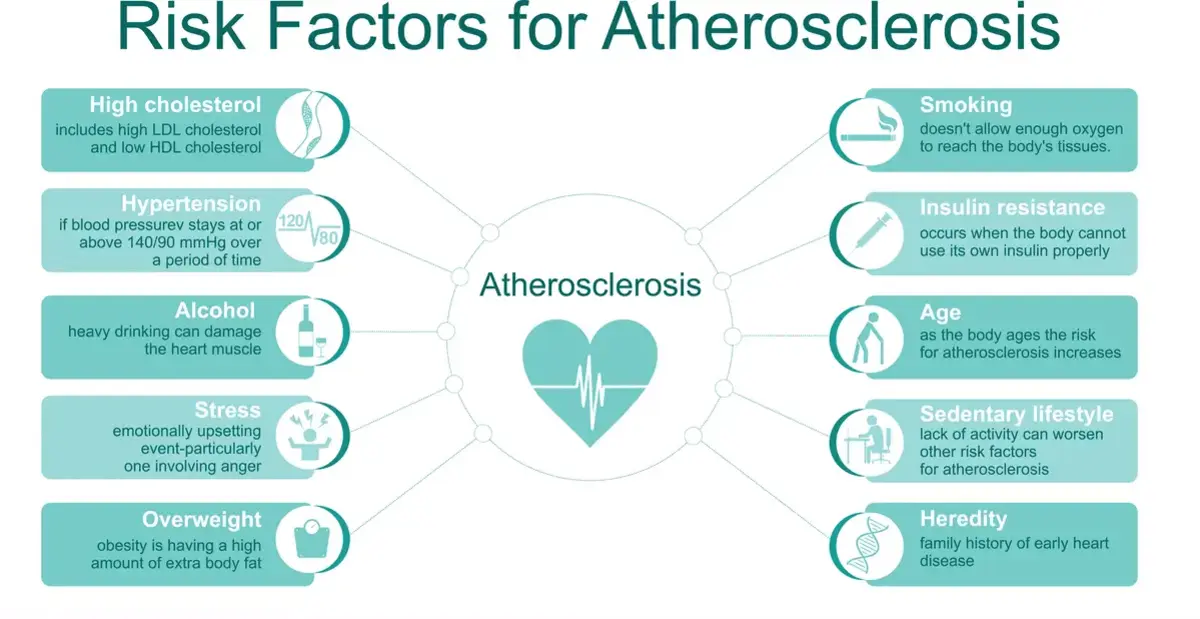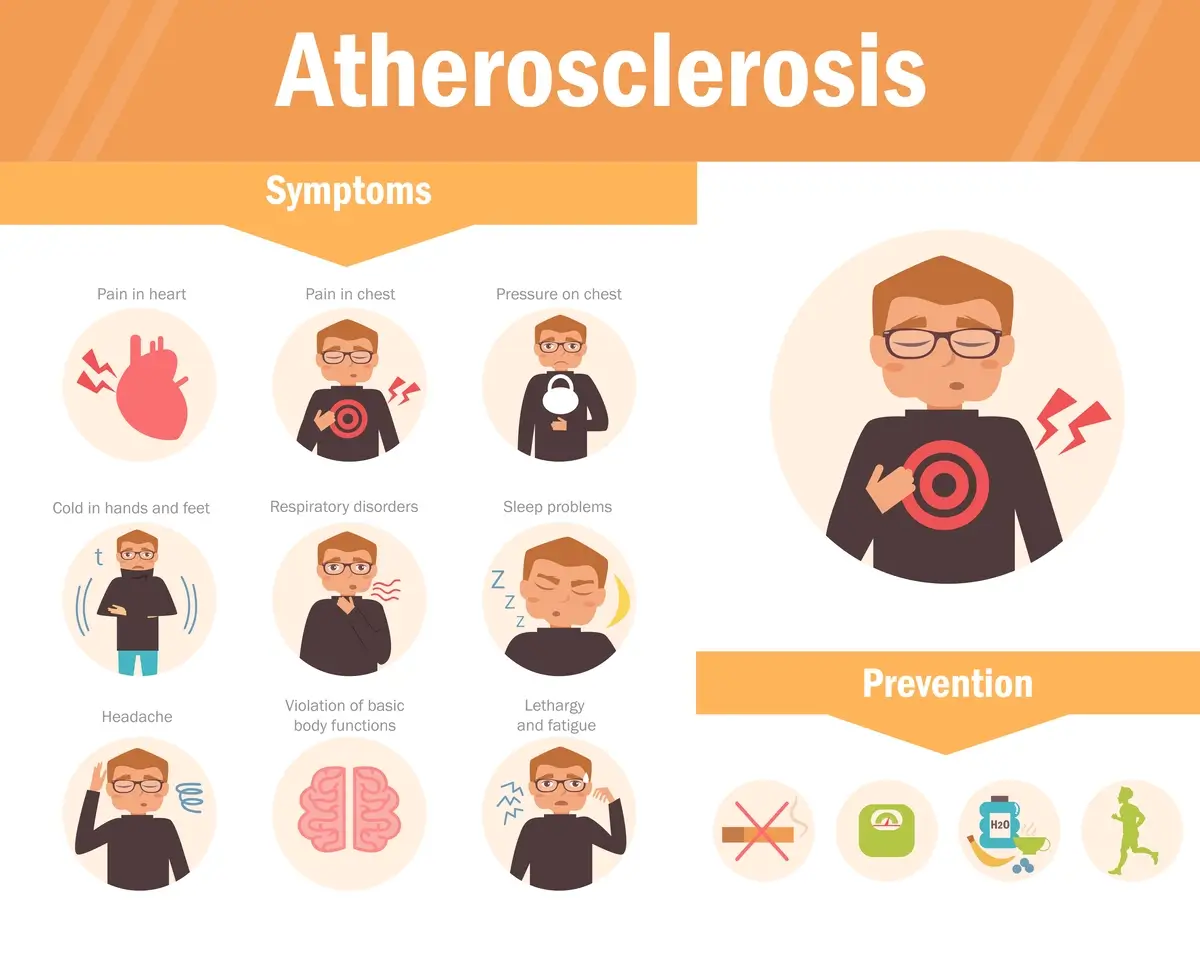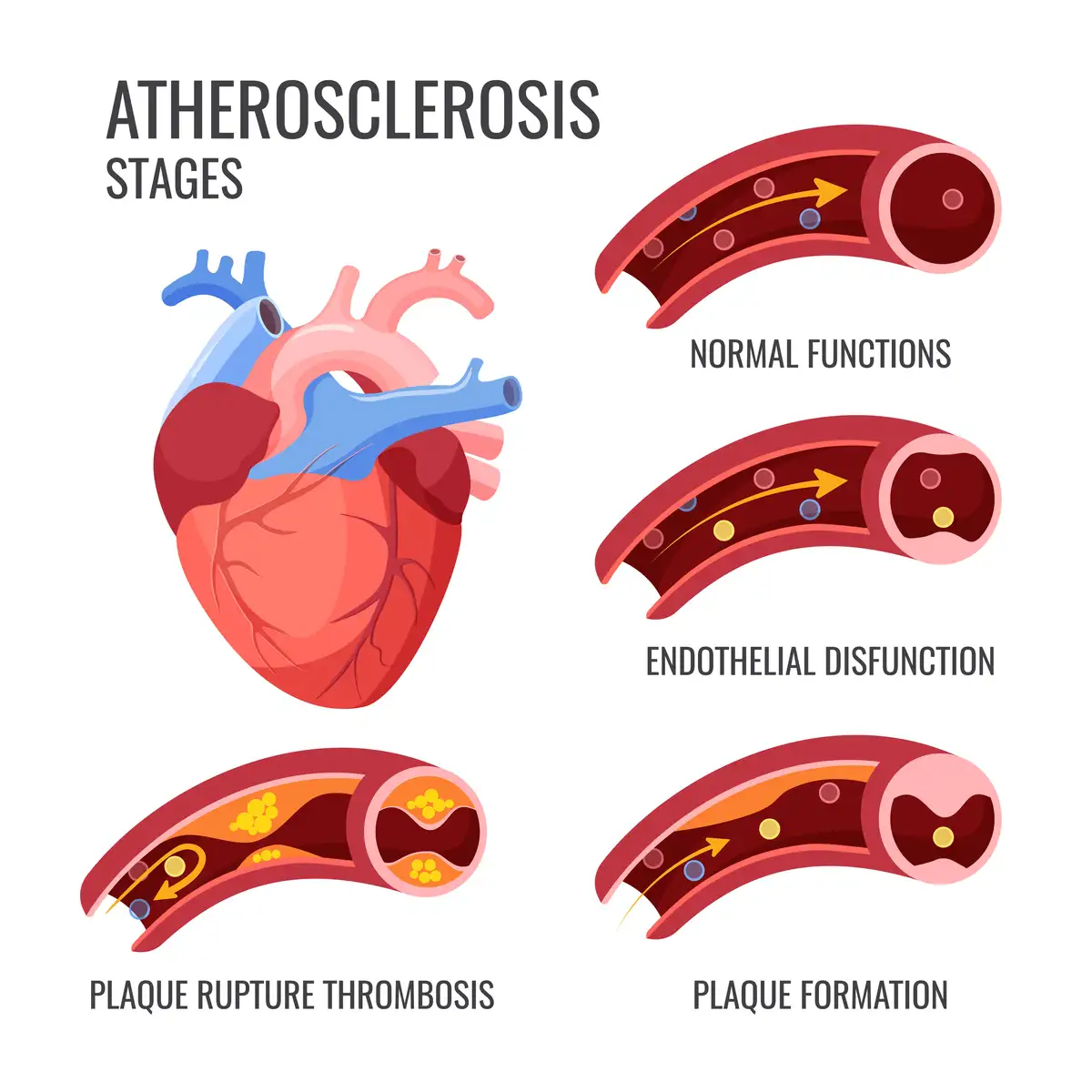Understanding Atherosclerosis: Causes, Symptoms, and Treatments
What is Atherosclerosis?
Atherosclerosis is a condition characterised by hardening and narrowing of the arteries due to the build-up of plaque on the artery walls. This plaque consists of fat, cholesterol, calcium, and other substances. Over time, this accumulation can restrict blood flow or, become inflamed and rupture. The arteries, being crucial for transporting oxygen-rich blood to various parts of the body, when impaired, can lead to serious health complications, including heart attacks, strokes, and peripheral artery disease. Understanding atherosclerosis is key to preventing its onset and managing its progression effectively.
The Importance of Recognizing Atherosclerosis Early
Early recognition of atherosclerosis is vital because it typically develops gradually and silently, often with no symptoms until an artery is so narrowed that it cannot supply adequate blood to organs and tissues. Early detection and treatment can halt or even reverse the progression of the disease, significantly reducing the risk of severe complications. Awareness of risk factors and early symptoms, coupled with regular health check-ups, can help identify atherosclerosis at an early stage when it is most treatable.
Causes and Risk Factors of Atherosclerosis

The Role of Cholesterol in Atherosclerosis
Cholesterol plays a significant role in the development of atherosclerosis. The body uses cholesterol to build cells, but too much cholesterol can lead to plaque formation. Low-density lipoprotein (LDL), contributes to plaque build-up. An imbalance in these cholesterol levels, particularly high LDL and low HDL levels, can accelerate the formation of plaque and progression of atherosclerosis.
Lifestyle Factors Contributing to Atherosclerosis
Diet and Atherosclerosis
Diet significantly influences the risk of developing atherosclerosis. A diet rich in fibre, fruits, vegetables, whole grains, and lean proteins can help reduce the risk.
Physical Inactivity and Atherosclerosis
Physical inactivity is another key risk factor. Regular exercise helps improve blood circulation, lower blood pressure, and maintain a healthy weight, all of which can reduce the risk of atherosclerosis.
Influence of Smoking
Smoking damages the lining of the arteries, making them more prone to the buildup of plaque. Quitting smoking is one of the most effective ways to reduce the risk of atherosclerosis and its complications.
Contribution of Diabetes
Diabetes can increase the risk of atherosclerosis by damaging the arteries and increasing inflammation in the body. Managing blood sugar levels through diet, exercise, and medication can help reduce this risk.
Genetic Factors and Atherosclerosis
Genetics also play a role in atherosclerosis. A family history of heart disease, high blood pressure, or high cholesterol can increase the risk, indicating a genetic predisposition to the condition.
Symptoms of Atherosclerosis

Recognizing the Symptoms of Atherosclerosis
Symptoms of atherosclerosis may not be evident until an artery is significantly narrowed or blocked. Symptoms, when they occur, depend on the arteries affected; for example, chest pain or shortness of breath may indicate heart artery involvement, while leg pain when walking might suggest peripheral artery disease. Besides, symptoms differ in different stages of the disease.
Early Warning Signs
Early warning signs of atherosclerosis may include chest pain, shortness of breath, fatigue, and weakness. These symptoms may occur during physical activity or when the heart is working harder.
Progression of Symptoms
As atherosclerosis progresses, it can lead to more severe symptoms. Prompt medical attention is essential if these symptoms occur.
Complications
Atherosclerosis can lead to serious complications, including heart attack, stroke, and peripheral artery disease. Managing risk factors and seeking medical treatment can help prevent these complications.
Diagnosis of Atherosclerosis
Blood Tests and Their Role
Blood tests play a crucial role in diagnosing atherosclerosis by measuring cholesterol levels and other risk factors.
Imaging Techniques in Diagnosing Atherosclerosis
Advanced imaging techniques, such as ultrasound, angiography, and CT scans, can visualise the inside of arteries, helping to identify areas of plaque accumulation and blockage.
Complications Arising from Atherosclerosis
Heart Attack
A heart attack occurs when the blood supply to part of the heart muscle is blocked, often by a blood clot formed over an area of plaque. This blockage can cause damage or death to the heart muscle, representing one of the most serious complications of atherosclerosis.
Stroke and Atherosclerosis
A stroke happens when a blood vessel supplying the brain is either blocked by a clot or bursts. Atherosclerosis can lead to the formation of these clots or the weakening of arteries, increasing the risk of stroke.
Peripheral Artery Disease (PAD) and Atherosclerosis
PAD is a condition where atherosclerosis affects the arteries supplying the legs and feet, leading to reduced blood flow, pain during walking, and, in severe cases, gangrene and amputation.
Preventive Measures and Lifestyle Modifications

Diet and Nutrition for Preventing Atherosclerosis
Foods to Eat and Avoid
A heart-healthy diet can significantly reduce the risk of atherosclerosis. This includes eating plenty of fruits, vegetables, whole grains, and fish while limiting saturated fats, and sugar. Avoiding processed and fast foods rich in unhealthy fats and sugars is also crucial.
The Importance of Regular Exercise
Regular physical activity is essential for maintaining healthy arteries.
Managing Stress to Combat Atherosclerosis
Managing stress is another key factor in preventing atherosclerosis.
Treatment Options for Atherosclerosis
Medications Used in the Treatment of Atherosclerosis
Cholesterol-lowering Medications
Statins are one of the most effective medication classes for treating atherosclerosis. They work by lowering LDL cholesterol levels in the blood, thereby slowing the progression of plaque build-up and, in some cases, even helping to reduce it. Statins also have anti-inflammatory properties that help stabilise plaque, making it less likely to rupture and cause a heart attack or stroke.
Blood Pressure Medications
High blood pressure is a significant risk factor for atherosclerosis. Medications such as ACE inhibitors, beta-blockers, and calcium channel blockers help lower blood pressure, reducing the strain on artery walls and slowing the progression of atherosclerosis.
Surgical Treatments for Atherosclerosis
Angioplasty and Stent Placement
Angioplasty is a procedure used to open narrowed or blocked arteries. A thin tube (catheter) with a balloon at its tip is threaded through a blood vessel to the affected artery. The balloon is then inflated to widen the artery, and a stent is often placed to keep the artery open.
Bypass Surgery
Bypass surgery involves creating a new pathway for blood flow using a vessel from another part of the body or a synthetic tube. This allows blood to bypass the blocked or narrowed artery, improving blood flow to the affected area.
Living with Atherosclerosis
Lifestyle Management for Patients with Atherosclerosis
Living with atherosclerosis requires ongoing management, including adhering to a heart-healthy lifestyle, taking prescribed medications, and regular monitoring by healthcare professionals. Patients may need to make significant lifestyle changes, such as adopting a healthier diet, engaging in regular physical activity, quitting smoking, and managing stress.
Conclusion
Understanding atherosclerosis, its causes, risk factors, and treatments, is crucial for preventing its onset and managing its progression. Early detection and lifestyle modifications, coupled with medical interventions, can significantly reduce the risk of severe complications. Ongoing research and emerging therapies continue to improve the outlook for individuals with atherosclerosis, offering hope for more effective treatments in the future.
Frequently Asked Questions (FAQs) About Atherosclerosis
Can Atherosclerosis be Reversed?
While atherosclerosis cannot be completely reversed, its progression can be significantly slowed or even partially reversed through lifestyle changes and medications.
How Common is Atherosclerosis?
Atherosclerosis is very common. Its prevalence increases with age, but younger individuals can also be affected, especially those with risk factors such as high cholesterol, high blood pressure, smoking, diabetes, and obesity.


